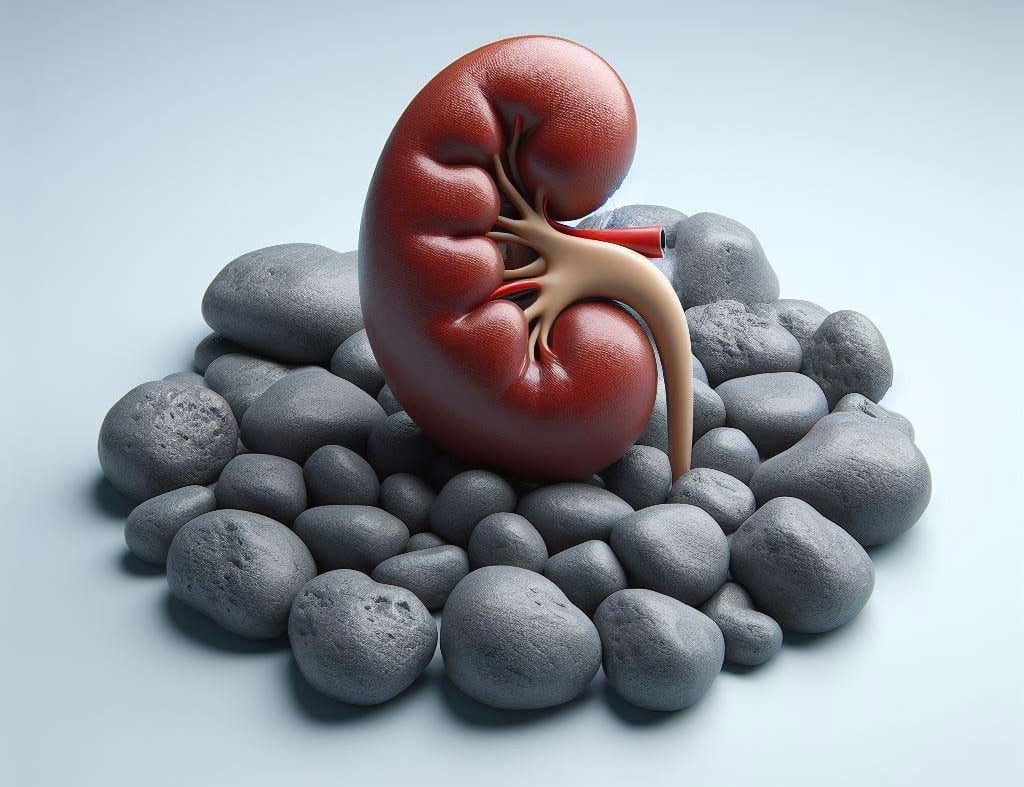Percutaneous Nephrolithotomy (PCNL)
PCNL or Percutaneous nephrolithotomy is a minimally invasive approach offering greater stone clearance compared to alternative methods.
URINARY STONE DISEASEBLOOD IN THE URINE
Ivo Dukic
2/12/20244 min read


For individuals diagnosed with large or complex kidney stones, navigating treatment options can be overwhelming. Percutaneous nephrolithotomy (PCNL) is a minimally invasive approach offering greater stone clearance compared to alternative methods. This article explains the PCNL procedure, exploring its indications, risks, alternatives, and exciting advancements in the miniaturisation of this keyhole procedure for kidney stones.
Understanding percutaneous nephrolithotomy
PCNL involves creating a small access channel through the back directly into your kidney using imaging (ultrasound and X-rays). Through this channel, specialized instruments including a special camera are introduced to visualise, break and remove the stone fragments. Compared to open surgery, PCNL has shorter hospital stays, faster recovery times, and less scarring. In fact, most patients stay in hospital for less than 24 hours.
When is PCNL considered?
PCNL is typically recommended for the treatment of:
Large stones: Stones exceeding 1.5 cm to 2 cm in diameter or those resistant to non-surgical treatments like shockwave lithotripsy.
Complexly shaped stones: Stones with intricate branches or in challenging anatomical positions.
Staghorn calculi: Large, branched stones resembling antlers, requiring extensive fragmentation and removal.
Multiple stones: Situations where multiple stones within the kidney necessitate a comprehensive approach.
Exploring Alternatives:
Before considering PCNL, your doctor might weigh various options depending on your specific situation:
Shockwave lithotripsy: Ultrasound waves break down smaller stones into fragments that your body eliminates naturally. For large stones, this can lead to many shockwave treatments and incomplete stone clearance.
Flexible uretero-renoscopy: A thin, flexible scope navigates the ureter (urine tube) to reach and remove smaller stones. Sometimes this is used at the same time as doing a percutaneous nephrolithotomy operation to improve the rate of stone clearance.
A revolution in minimisation
Minimizing access and instruments in PCNL offers several advantages:
Reduced pain and scarring: Smaller incisions translate to less tissue disruption and faster healing.
Shorter hospital stays: Minimally invasive approaches often lead to quicker discharge and recovery, including some patients having day case PCNL procedures
Improved stone-free rates: Smaller instruments offer better manoeuvrability and potentially higher stone clearance rates.
Types of PCNL procedures:
Supine Standard PCNL (8-12 mm incision in the skin): Patients were traditionally operated on in a face-down (prone) position for many years. Performing the PCNL procedure whilst on your back allows your lungs to work more naturally, making anaesthesia easier, potentially reducing recovery time and lowering the chance of bowel injury. This slightly larger incision is used to get maximum access and stone clearance and is particularly useful for large stones (staghorn stones), multiple stones, complex kidney anatomy or infective kidney stones.
Mini PCNL (6-8 mm incision in the skin): uses a mini access channel (typically 5-7 mm in size), this technique offers quicker procedures and shorter hospital stays. This is particularly used for stones between 1.5cm and 2.5 cm or difficult-to-access kidney stones and uses LASERs to break up kidney stones.
Super Mini PCNL (3-6 mm incision in the skin): The smallest access, typically an under 4 mm channel, is used which minimizes pain and scarring significantly. Although suitable only for relatively small stones or those stones which may be difficult to access through a flexible uretero-renoscope (often lower pole stones).
Considering the Risks:
Whilst minimally invasive, PCNL still carries potential risks, including:
Mild bleeding into your urine is likely to occur in every patient undergoing PCNL
Stent symptoms, nephrostomy symptoms or a urinary catheter. Most patients are left with a ureteric stent, which allows the kidney to drain following the procedure. This is typically left in for 3-5 days and removed using some strings which are left outside the waterpipe (urethra) following the procedure. Almost all patients under my care (90%+) are left with a stent or nephrostomy after a PCNL procedure. Some patients are also left with a catheter and/or nephrostomy. Typically this is done to try and prevent complications during surgery if necessary.
Failure to clear all of the stones is likely to occur (varies on stone volume, kidney anatomy and patient factors). The more complex the presentation and the larger the amount of stone the less likely it is we can achieve complete stone clearance. This is assessed on a CT scan 2-3 months following the procedure to look for any remaining stone fragments.
Stone recurrence is likely to happen in at least 50% of patients in the next 5-10 years.
Bleeding: Although uncommon, excessive bleeding may require a blood transfusion. If significant bleeding occurs patients may also require embolization treatment which can affect kidney function, and very rarely open surgery to the kidney (if the bleeding continues).
Infection: Post-operative infections (in the urine, skin or blood), can often be cured with antibiotics are a possibility after PCNL. Serious infections including sepsis occur less than 5% of the time but are more frequent in large or infective kidney stones and women.
Kidney injury, including kidney failure: Minor damage to the kidney during the procedure is a potential risk.
Leakage: Urine leakage from the access site which is usually temporary, may occur.
Failure to gain access to the kidney occurs every 1 in 50 patients. If this happens your surgeon will discuss alternative options or try to gain access through a different route.
Injury to nearby organs: although rare this can include puncturing the space around the lungs, or injury to the bowel, spleen or liver. If a serious injury occurs to a nearby organ this can be life-threatening.
Choosing the Right Approach:
Your urological surgeon will consider your stone size, location, and individual medical history and will guide you towards the most suitable form of treatment for your kidney stone. Open communication and discussing your concerns are crucial in making an informed decision.
Further links
Information leaflet from the British Association of Urological Surgeons on PCNL
Animated video from the European Association of Urology (below)

Beyond the procedure:
Remember, successful stone management extends beyond the procedure itself:
Hydration: Aim for 2.5 -3 litres of water daily to prevent or delay further stone formation.
Dietary modifications: Minimize stone-forming foods like animal protein and oxalates based on your stone type.
Scheduled check-ups can ensure timely detection and management of any recurrent stones if required.
This article provides general information and should not substitute for professional medical advice that is tailored to your situation with your urologist. Always consult a urologist for a personalised assessment and treatment plan.
The specific risks and benefits of PCNL may vary depending on individual circumstances and presentation.
Mr Ivo Dukic is a leading Consultant Urologist based in Birmingham and an expert in kidney stone surgery. His practice is distinguished by its focus on Percutaneous Nephrolithotomy (PCNL), utilising the very latest in minimally invasive techniques, including mini-PCNL and ultra-mini PCNL.
Schedule an appointment with him for expert, bespoke advice through his Top Doctors profile or book an appointment through Harborne Hospital, HCA Healthcare, the Priory Hospital, Edgbaston, Circle Health Group or Droitwich Spa, Circle Health.
Ivo Dukic
Contacts
e-mail: admin@ivodukic.co.uk
Telephone number for private patients:
0121 716 9046
(Mondays to Fridays 0800 - 18:00)
For NHS patients seen at University Hospitals Birmingham NHS Hospitals please get in contact on
0121 424 9011
(Mondays to Fridays 0900 - 17:00)
ivodukic.co.uk
© 2025 UrolSurg LTD


